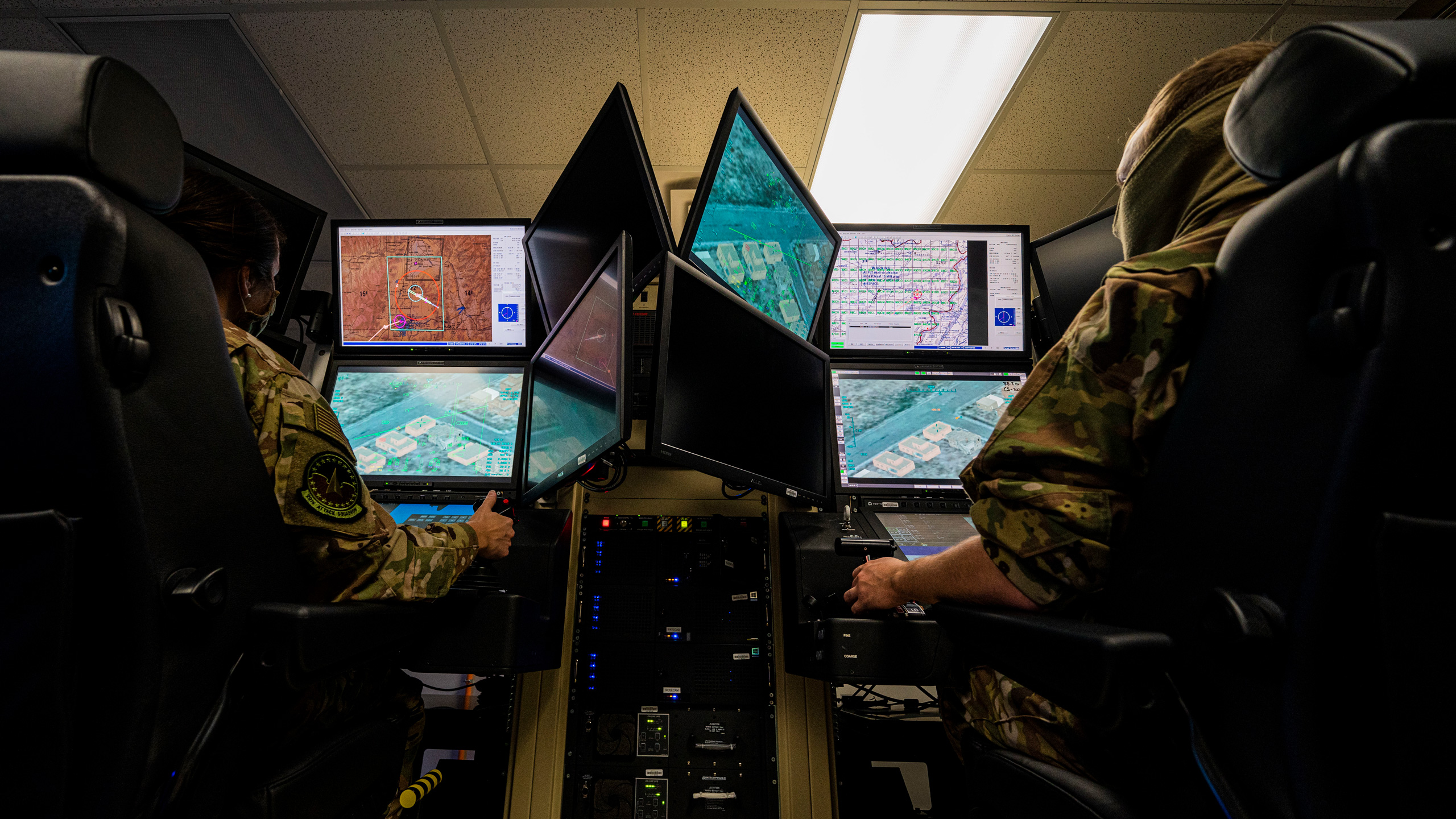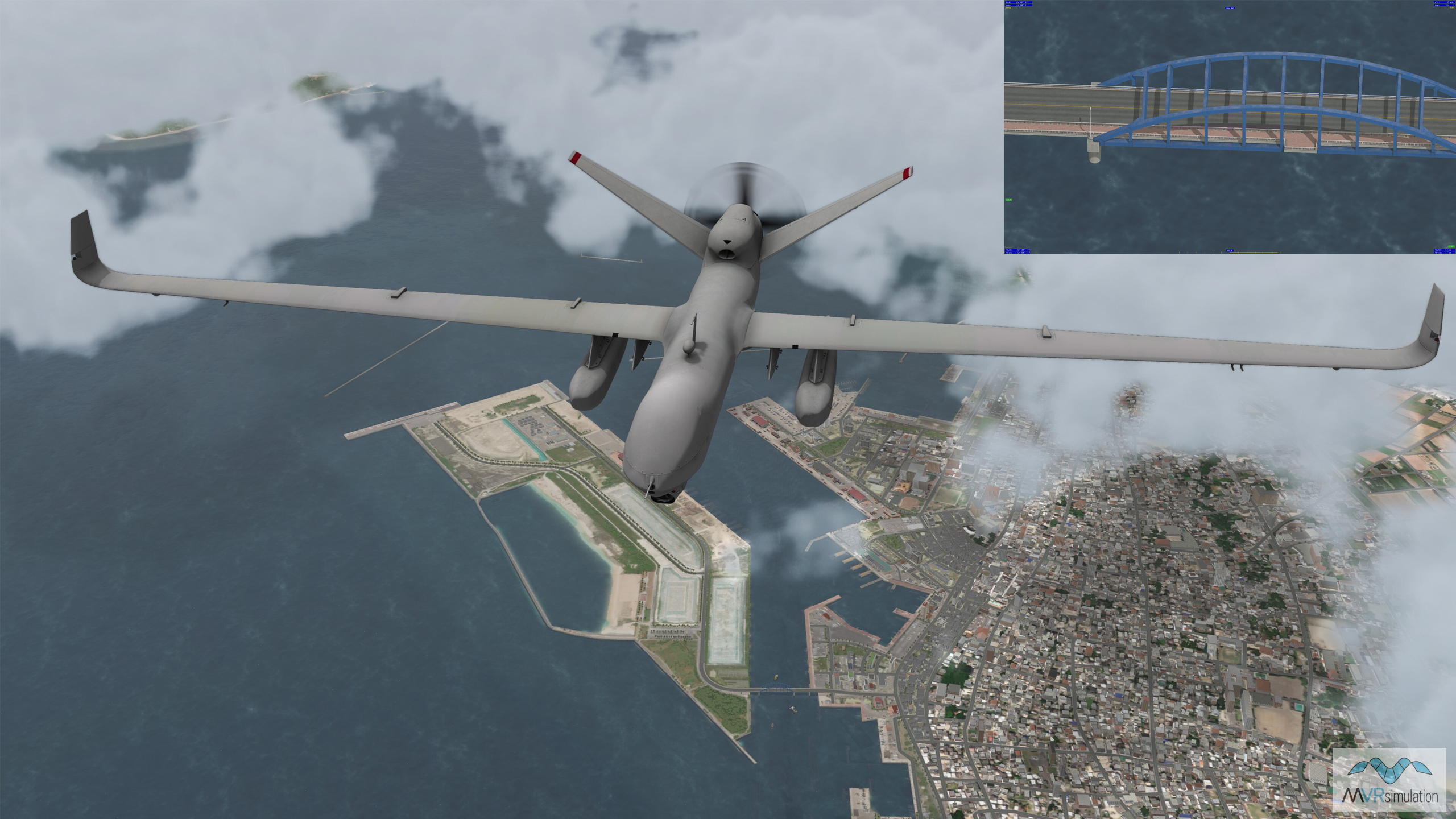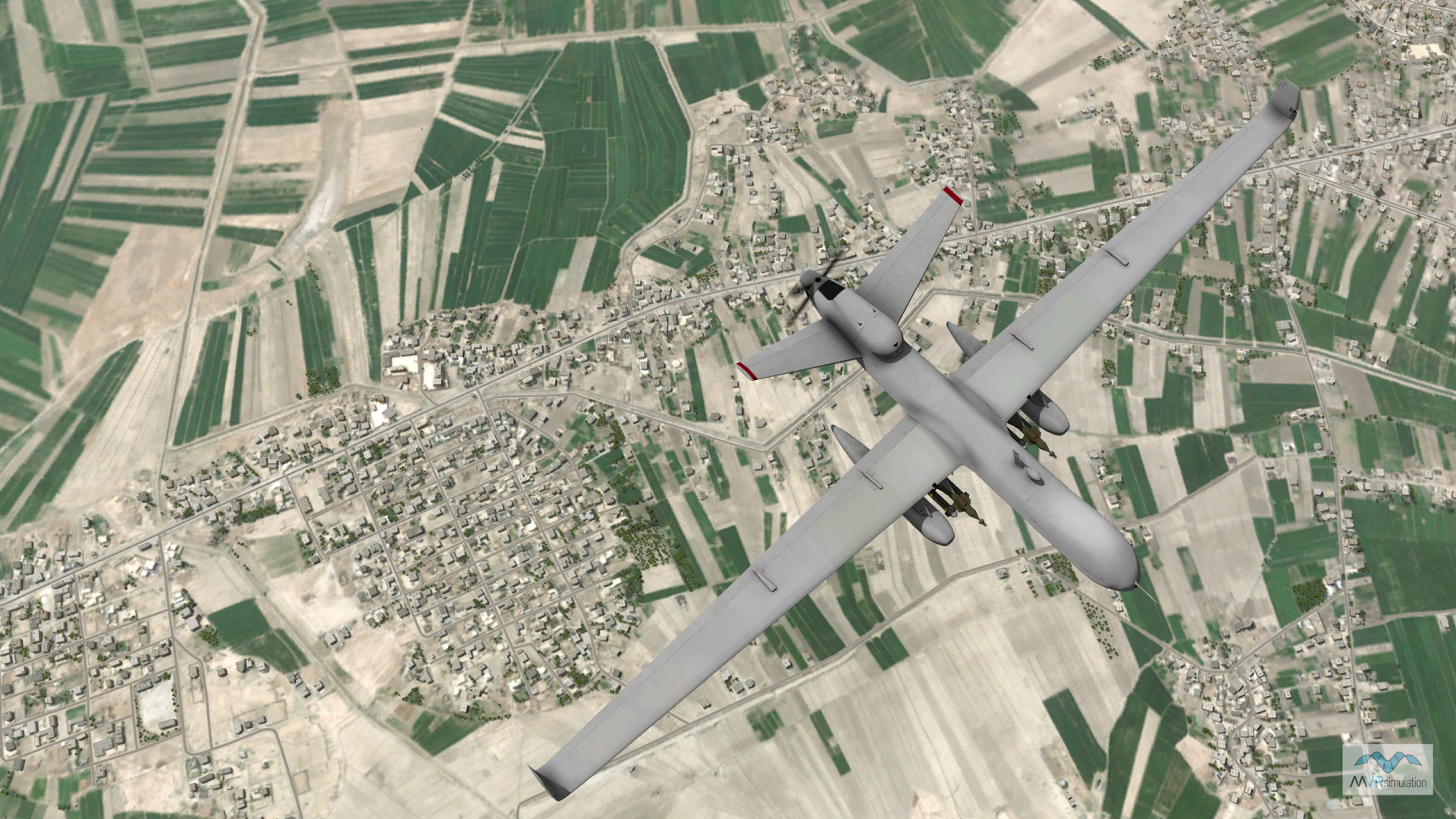USAF MQ-9 Reaper RPA simulator (MJAT)

Pilot and sensor operator training on the U.S. Air Force MQ-9 Reaper MJAT simulator with MVRsimulation VRSG, at Whiteman Air Force Base, Missouri. (U.S. Air Force photo by Airman 1st Class William Rio Rosado.)
One of the many development efforts at the U.S. Army Joint Technology Center and Systems Integration Lab (JSIL) that involve the use of MVRsimulation's Virtual Reality Scene Generator (VRSG) is the MALET-JSIL Aircrew Trainer, or MJAT.
In this plug-and-play training capability, VRSG is coupled with government off-the-shelf software to create a ground control station (GCS) simulator for training pilots and sensor operators of the General Atomics MQ-9 Reaper Remotely Piloted Aircraft System (RPAS), as an upgrade to the U.S. Air Force’s Predator/Reaper Mission Aircrew Training System (PMATS) program.
Designed to provide crew training for U.S. Air Force MQ-9 operators, the MJAT is a roll-up system that appends to a tactical MQ-9 GCS in order to convert it to a training simulator. It provides RPA operators the ability to conduct simulation training as part of qualification and follow-on continuation training to maintain proficiency and currency in all required tasks. The complete MJAT family of systems includes the MJAT as well as the MJAT Stand Alone Trainer (MSAT), which uses GCS-like hardware to provide a training-only solution; and the Desk Top Trainer, which is used for classroom familiarization training.
The deployment of MJAT began in 2016, with 56 systems (with VRSG) installed at U.S. Air Force sites across the country. JSIL purchased 88 additional VRSG licenses in 2019, 171 in 2020, and in Q4 2022 a further 91 licenses were purchased to support the continued roll-out of MJAT as an upgrade to the USAF PMATS program. The existing PMATS devices are being progressively shipped to the Joint Technology Center/System Integration Laboratory (JSIL) facility in Huntsville, Alabama, where the original PMATS configuration is being upgraded with the newly updated simulation software suite.
Like other JSIL developed UAS/RPA trainers, the embedded MJAT uses the Air Force Synthetic Environment for Reconnaissance and Surveillance (AFSERS) software to stimulate the tactical Vehicle Control software (VCS) to simulate GCS functions: air vehicle control, payload control, weapons control, communications, send and receive video data, and mission planning. VRSG simulates the Reaper's camera payload by streaming real-time HD-quality H.264 video with KLV metadata This allows operators to train using the same hardware that they use to operate the actual aircraft in real-world missions, stimulating real ISR systems and interoperating with networked Joint Terminal Attack Controller (JTAC) simulators.
The MJAT simulators also use Battlespace Simulations' (BSI's) Modern Air Combat Environment (MACE) for scenario creation and computer-generated/semi-automated forces (CGF/SAF). As this software is also used by JTAC simulators, systems that use MACE and VRSG can enable training for Reaper operators and JTACs in a joint, simulated training environment that can identically replicate real-world missions via Combat Air Force Distributed Mission Operations (CAF DMO).


